Renowned Teachers of Ancient times
Blogs Home
- 07 Sep 2022
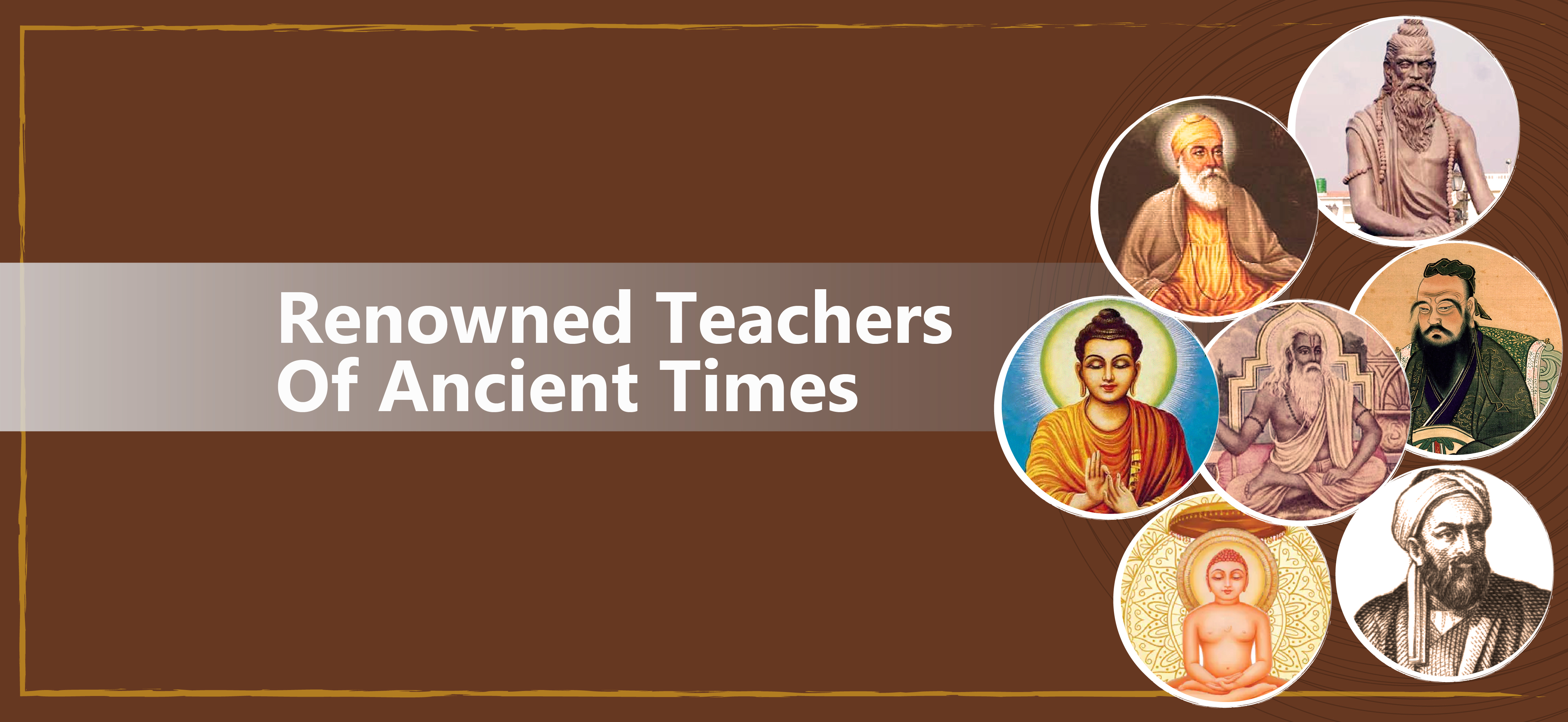
Since time immemorial, the world has witnessed some of the most outstanding teachers who have managed to steer the thoughts of people of their times to great extents. Many such teachers, who were also sages, thinkers and philosophers, belonged to the Asian continent. Their teachings moulded the thought process of entire generations. The valuable lessons they taught have been included in school curricula centuries after their time. Let's have a look at some of these great pedagogues!
"Kaalo asmi lok-akshayakrit-pravriddho... (I am Time, the great destroyer of the world-Bhagavad Gita 11.32)"
— Ved Vyasa, The Bhagavad Gita
Badarayan, more commonly known as Bhagwan Veda Vyas, is Sanatan Dharma's adi (first) acharya. His dark complexion rendered him the name Krishna.
In the beginning, there existed only one Veda. Vyas simplified and divided this into four parts: Rig, Sam, Yajur and Atharva. That's why he came to be known as Veda Vyas. For the lay people, he then composed 17 Puranas. Through these, in the form of stories, different groups of people were then able to consolidate their devotion to their revered deities.
Vyas then composed the Itihaas text 'Mahabharata' to propagate the principles of dharma, artha, kama and moksha. As he uttered the aphorisms, Ganesha scribed them.
Vyasa had also composed the eighteenth Mahapurana, the Srimad Bhagavata, also known as Satvati Shruti - the Veda of the Vaishnavs.
Hindus consider Vyas as Chiranjivi or immortal, one who is still living and walking the earth for the well-being of his devotees.
Veda Vyas was born to Satyavati, the daughter of a fisherman. While ferrying travellers across the Yamuna river during her youth, she met the great sage Parashara. Being attracted to each other, they ended up conceiving Veda Vyas.
Because Veda Vyas compiled the wealth of spiritual literature used by most of Hinduism's significant lineages, many view him as the original guru, which is why Guru Purnima, the day to pay respect to the guru, is celebrated on his birthday.
— Shivani Barhela
Maharishi Patanjali, also known as Gonardiya or Gonikaputra, was a great sage of ancient India who is believed to be the first founder of Yoga. Despite the uncertainty about the time of Patanjali's birth, many myths surround it. Some say that Patanjali fell to Earth as a snake called Gonika, while others believe that Patanjali was an incarnation of Ananta, or Shesha, the 1,000-headed serpent king who is often depicted supporting Lord Vishnu. Patanjali is assumed to have resided in Gonda, a district of Uttar Pradesh that was also where Buddha lived. Not much is known about his life and the time when he existed. Still, from the analysis of his notable works in the Sanskrit language, especially the Yoga Sutras, it is estimated to be around the 2nd or 5th Century BCE.
About Yoga Sutra
It is the compilation of Indian sutras (aphorisms) about Yoga. Although the Yoga Sutras are made up of short and simple verses, they contain in-depth perspective and practical wisdom. Those who follow a spiritual yoga practice may choose to study or meditate on the Sutras.
The sutras are composed of four books:
- Samadhi pada (what yoga is)
- Sadhana pada (how to gain a yogic state)
- Vibhuti pada (benefits of practising yoga regularly)
- Kaivalya pada (liberation or freedom from suffering)
Though references to yoga within Hindu scripture had already existed before Patanjali, it is believed they were too diverse and complex for the general public. Thus, he assimilated the Yoga Sutras in such a way by compiling already existing teachings into a format which is easier to follow and understand.
— Priyadarshini Biswas
Lord Mahavira, also known as Vardhamana, was Jainism's 24th and last Tirthankara. He was born Prince Vardhamana to king Siddhartha and queen Trishala of Vaishali (one of the 16 Mahajanapadas of ancient India).
Mahavira renounced his worldly life at the age of thirty and spent the next twelve-and-a-half-year in rigorous meditation to attain spiritual enlightenment. After this, he spent his remaining life teaching his philosophy.
Five Important Teachings of Mahavira
- Non-Violence (Ahimsa): Mahavira emphasised that no person should harm any living creature on the planet in any way
- Truthfulness (Satya): According to this principle, everyone should be true to oneself and others by striving to bring honesty into its core essence.
- Non-Stealing (Asteya): Abstinence of theft of any kind, be it wealth, fame or anything, is an integral part of Mahavira's teaching.
- Chastity (Brahmacharya): Teachings of Mahavira lay emphasis on staying away from sensual or sexual pleasures, as this is necessary to keep the mind and senses under control.
- Non-Possession (Aparigraha): It requires complete detachment from people, places and maternal property.
Apart from these five principles, Mahavir's most important teaching, which is also most relevant for today's world, is "Anekantavada" which is Pluralism and diversity of viewpoints.
The root cause of almost all the conflicts in today's world is that one thinks that their viewpoint is correct and the other's is wrong. But according to Lord Mahavira, in the world, multiple views exist, and no one is entirely correct, and no one is completely wrong, and this is the beauty of diversity.
— Sanket Sengar
Guru Nanak was an Indian spiritual teacher who was also the founder and first Guru of Sikhism. He was a heavenly messenger and a born world teacher who taught humanity the path of righteousness and truth.
India has come a long way since independence. However, it still faces the issues of social disharmony and conflicts, which hinder its peaceful growth and development. The teachings of Guru Nanak still act as the lamp showing us the path of a just society.
His innovative social institutions, namely Langar, Pangat and Sangat, were based on the idea of equality to build an egalitarian society. He says the world is God's creation, and all are born equal. He gave the principles of "Kirat Karo (honest living), Naam Japo (God worship by meditating and chanting) and Vand Chhako (sharing)" to his disciples. Respect for women and gender equality is perhaps the most important lesson to be learnt from his life. He considered the whole of humanity as one family. According to him, One should request the Lord for the welfare of the whole of society and not just of our community or our family alone (Sarbat daa bhalaa). He asked his followers always to speak the truth without any fear.
Sri Guru Nanak Dev also emphasised the importance of a Guru in one's life. Guru, according to him, is the true source of knowledge and salvation, who, without any discrimination, shows the path of truth and enlightenment. The ideas of Guru Nanak Dev can help promote peace, equality and prosperity across the globe.
— Samrat Bidhuri
Gautama Buddha was an ascetic and spiritual teacher of ancient India. He was the founder of Buddhism. The term "Buddhist" today refers to the follower of Buddha who has attained enlightenment and has rediscovered the route to liberation from ignorance, craving, and the cycle of reincarnation and misery. Buddha spread Buddhism for around 45 years.
He was born as Siddhartha Gautama in circa 563 BCE, in a royal family in Lumbini, which is situated near the Indo-Nepal border. After witnessing four major events in his life, he was left with a question as to what was the truth of life. That was the time when he made the decision to give up on the world. Buddha then wandered from one place to the other, seeking truth. Finally, in his 35th year, he attained wisdom, the ultimate reality, sitting under a huge banyan tree in Bihar's Bodh Gaya.
He then began preaching the truth to his disciples, who went with him to different parts of the country. His teachings are founded on his realisation that unhappiness and suffering lead to a condition known as Nirvana. He mentioned the Noble Eightfold Path in his lectures to conquer desires and attain complete control.
The first three paths described how one could gain physical control. The following two paths showed us how to achieve the fullest mental control. The last two paths were described to help people attain the highest level of intellect.
The Four Noble Truths: First Wheel of Dharma
- Life is suffering
- The cause of suffering is craving
- The end of suffering comes with an end to craving
- There is a path which leads one away from craving and suffering
His teachings help Buddhists to understand and ultimately overcome grief. He preached that only sacrifice could not make a person happy and free from all the bonds he has in the world. He also described Nirvana as the ultimate objective. His sermons still have relevance today and can be connected to our suffering.
— Vijaylaxmi Pareek
Confucius, known initially as Kongqiu, was born in 551 BCE in Qufu during the times of the Zhou dynasty. He was China's most famous teacher, philosopher, and political theorist, whose ideas have profoundly influenced the civilisations of China and other East Asian countries.
His intense gravitation toward learning made him work for a nobleman in his adolescent years. It was so because, in his times, only the nobility and royals were allowed an education and all the teachers were government officials.
Confucius studied and learned until he probably became the most learned man of his day. People heard of his knowledge and sent their sons to study with him. He was the first private teacher in China.
His ideas, called Confucianism, stressed the need to develop responsibility and moral character through rigid rules of behaviour. According to Confucius, a gentleman's refinement and moral acuity were essential to a political profession.
Teachings of Confucius
- He believed in respect; people should respect the ruler.
- He believed that people should respect each other.
- He believed in good moral conduct.
- He believed in a code of behaviour, a structured life.
Confucius didn't limit education to the nobility; that's why he taught anyone eager to learn, which often included sons of aristocrats, children of common gentlemen, merchants, farmers, artisans, and even criminals and sons of criminals.
The students of Confucius, known as "disciples" or "apprentices" (tu), regarded him as the "master" (zi). In ancient China, Confucianism became both a philosophy and a religion. It was the state-sponsored "religion" of many Chinese dynasties. Today, the people of China celebrate Confucius's Birthday (Teacher's Day) in his honour.
— Sanchayita Pattanayak
When the Iranian scholar, Al Biruni, visited India a thousand years ago, he did not know that one day he would be called ‘the Father of Indology'. As a well-versed polymath studying astronomy, mathematics, history and languages etc., he observed India through the eyes of a teacher, a researcher and a historian. The result of his endeavours in India was the voluminous book titled ‘Al Biruni's India', which is today the library companion of thousands of scholars, readers and history buffs.
To a modern reader, this book may look pretty one-sided, biased that is; or even provocative! But for the time when it was written, the book was relatively neutral in its observations. When we read it today, we have to keep this in mind.
While in India, Al Biruni studied Sanskrit, read books in that language, conversed with hundreds of learned men of the time, and translated the Yoga Sutras of Patanjali; conversely, he taught Indian scholars and teachers (pundits) the sciences and philosophy of the Greeks and of the Islamic world.
Today, we can put a value on his works, we can criticise his observations or we can even choose to ignore what he said about India. But what we cannot do is dismiss his contributions as a teacher.
Through his works, he taught the Islamic world about India while personally teaching Indians the discoveries and inventions from abroad. Furthermore, through his book on India, he has been teaching us for a thousand years – shaping our opinion of ourselves; informing our modern Historians and Social Scientists on what the world felt like in 1000 AD; telling us how we are different (and often so bluntly!) so that we can find ways to shed the differences, and often showing us comparisons between religions (in a way giving birth to the study of Comparative Religions)!
To conclude, here is a passage from the book Al Biruni’s India (translated – Edward C Sachau) about an Indian king, and there are hundreds of such stories in the book:
The last king of this race was Lagaturman, and his Vazir was Kallar, a Brahman. The latter had been fortunate, in so far as he had found by accident hidden treasures, which gave him much influence and power. In consequence, the last king of this Tibetan house, after it had held the royal power for so long a period, let it by degrees slip from his hands. Besides, Lagaturman had bad manners and worse behaviour, on account of which people complained of him greatly to the Vazir. Now the Vazir put him in chains and imprisoned him for correction, but then he himself found ruling sweet, his riches enabled him to carry out his plans, and so he occupied the royal throne. After him, ruled the Brahman kings Samand (Samanta), Kamalu, Bhim (Bhima), Jaipal (Jayapala), Anandapala, Tarojanapala (Trilochanapala). The latter was killed A.H. 412 (AD. 1021), and his son Bhimapala five years later (A.D. 1026).
This Hindu Shahiya dynasty is now extinct, and of the whole house, there is no longer the slightest remnant in existence. We must say that, in all their grandeur, they never slackened in the ardent desire of doing that which is good and right, that they were men of noble sentiment and noble bearing. I admire the following passage in a letter of Anandapala, which he wrote to the prince Mahmud when the relations between them were already strained to the utmost: “I have learned that the Turks have rebelled against you and are spreading in Khurasa. If you wish, I shall come to you with 5000 horsemen, 10,000 foot-soldiers, and 100 elephants, or if you wish, I shall send you my son with double the number. In acting thus, I do not speculate on the impression this will make on you. I have been conquered by you, and therefore I do not wish that another man should conquer you.”
The same prince cherished the bitterest hatred against the Muhammadans from the time when his son was made a prisoner, whilst his son Tarojanapala (Trilochanapala) was the very opposite of his father.
Debabrat Gogoi
These teachers, thinkers and philosophers in different time periods have propagated change and shaped our ways of thinking using different pedagogies, the impact of which can be seen even today. We hope the world while remembering the old gems, is able to produce more such teachers who can bring the much-needed change in today's age and time
Blogs Home
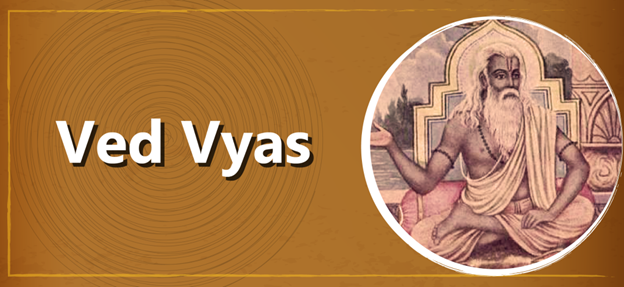
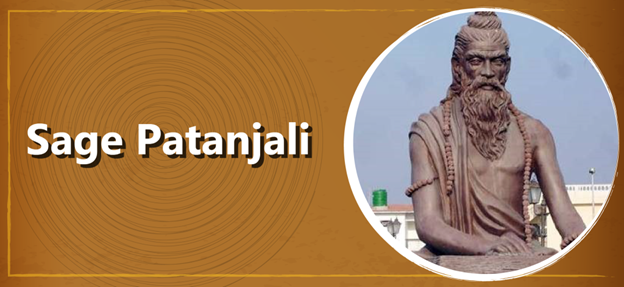
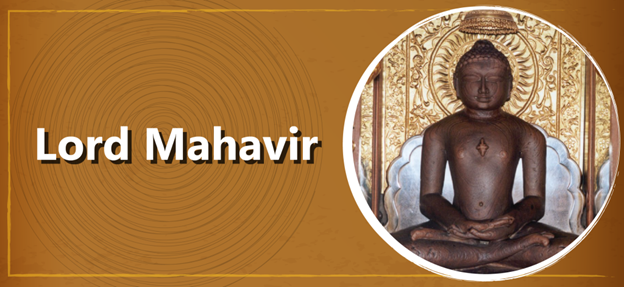
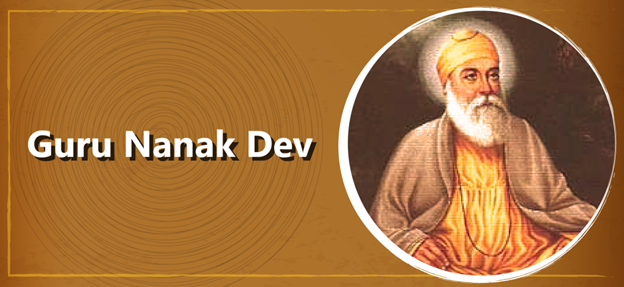
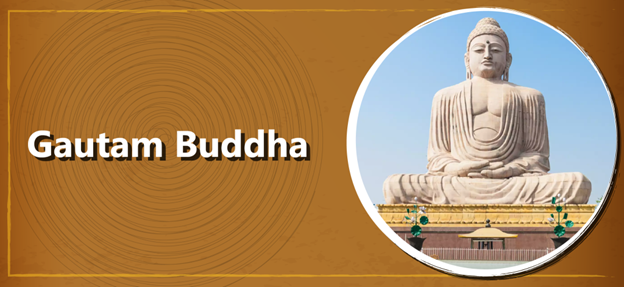
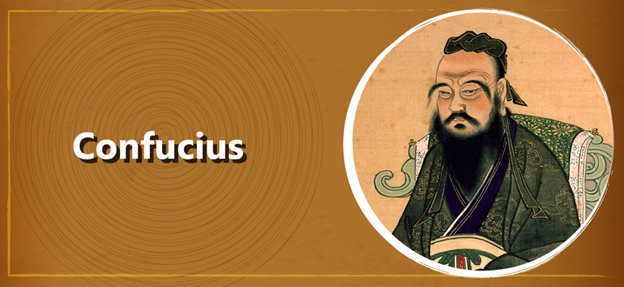
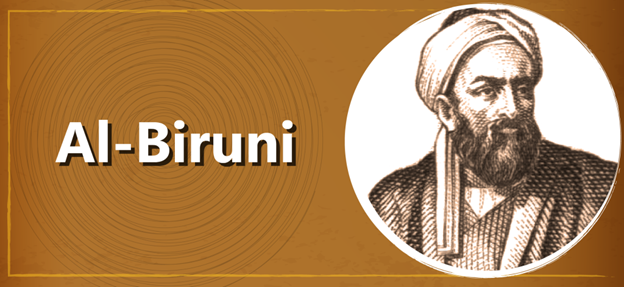




-min.jpg)